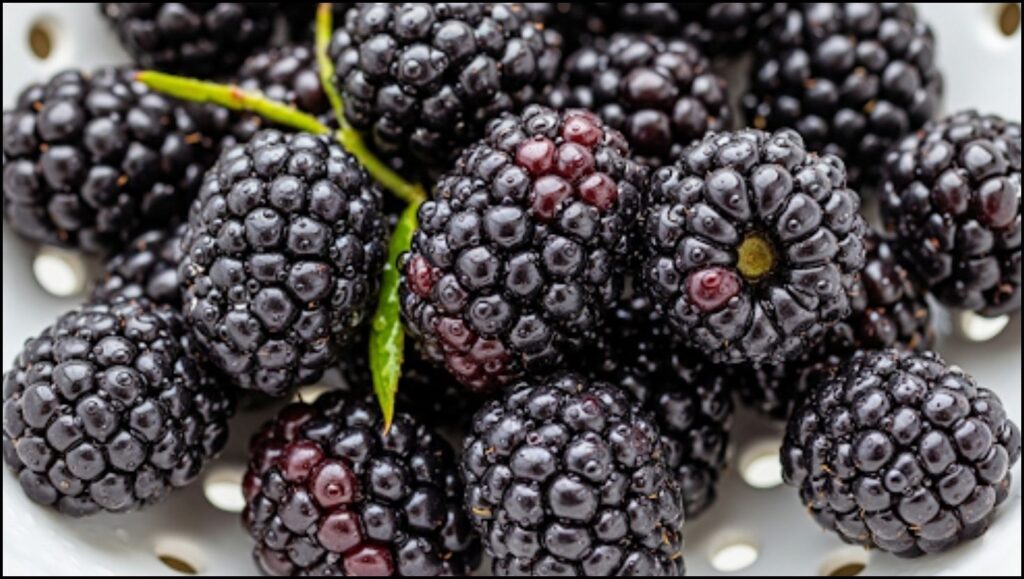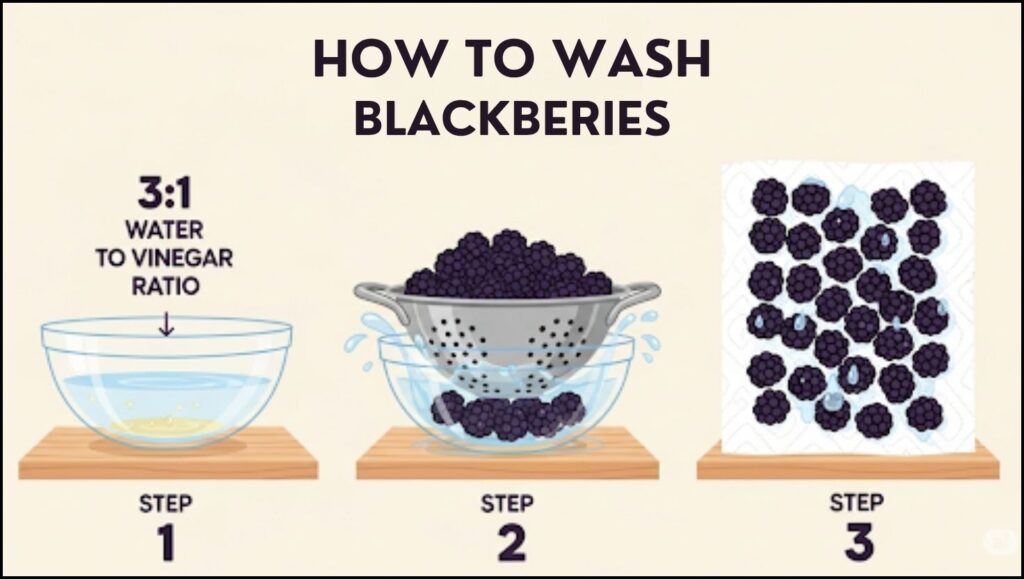
With farmers markets and grocery aisles full of fresh blackberries, consumers often face a dilemma: what is the most effective method for cleaning these delicate fruits? Proper washing is essential for removing potential contaminants like bacteria, dirt, and pesticide residues. Food safety experts have outlined a specific process for how to wash blackberries that not only ensures they are safe to eat but also helps preserve their fragile structure and extend their notoriously short shelf life.
Key Steps for Washing and Storing Blackberries
| Key Action | Detail & Rationale |
| Wait to Wash | Wash berries only immediately before consumption. Washing introduces moisture, which accelerates mold growth and spoilage. |
| Use a Vinegar Solution | A solution of 3 parts cool water to 1 part white vinegar is more effective at killing bacteria and mold spores than plain water. |
| Gentle Soaking | Submerge berries in the solution rather than blasting them with tap water, which can cause bruising and damage. |
| Dry Thoroughly | Pat berries completely dry with a clean towel or use a salad spinner on a gentle setting to remove all excess moisture. |
Why Proper Washing is More Than a Simple Rinse
Blackberries, like all fresh produce, can carry microorganisms from the soil, handling, and environment. While many are harmless, some can pose health risks, including bacteria like Listeria and E. coli. Furthermore, their bumpy, composite structure provides ample hiding places for dirt and potential pesticide residues.
“Washing produce under running water is a good practice to help remove visible soil, but it may not be sufficient for eliminating microbial contaminants,” said Dr. Amanda Deering, a food scientist and Associate Professor at Purdue University’s Department of Food Science. Her research emphasizes that adding a mild acid, like vinegar, can significantly improve food safety at home.
Even organically grown blackberries, which are produced without synthetic pesticides, require thorough washing. They are still exposed to the natural environment and can accumulate dirt and naturally occurring microbes that can lead to spoilage or illness.
The Expert-Recommended Method for How to Wash Blackberries
Food scientists and culinary experts largely agree on a method that balances cleaning efficacy with the fruit’s delicate nature. The goal is to clean the berries without turning them into a pulpy mess.
Step 1: Prepare a Diluted Vinegar Bath
The most recommended method involves a simple, inexpensive solution: a bath of three parts cool water and one part distilled white vinegar. The acetic acid in vinegar acts as a natural antimicrobial agent, effectively reducing bacteria and breaking down the waxy cuticles where some residues may cling.
A study published in the Journal of Food Protection confirmed that vinegar solutions are effective at reducing microbial loads on produce. Unlike commercial fruit washes, a homemade vinegar solution has no proprietary ingredients and is significantly more cost-effective.
Step 2: Gentle Soaking and Agitation
To avoid damaging the berries, experts advise against placing them directly under a forceful stream of tap water. Instead:
- Place the blackberries in a large colander.
- Submerge the entire colander into a large bowl containing the vinegar-water solution.
- Let the berries soak for 1 to 5 minutes, gently swishing them in the water with your hands.
This process allows the solution to reach all the crevices of the fruit without the physical force that causes bruising.

Step 3: Rinsing and Drying Thoroughly
After soaking, lift the colander out of the bowl and rinse the blackberries thoroughly under a gentle stream of cool running water. This step is crucial to remove any lingering vinegar taste.
Drying is perhaps the most critical step for extending freshness. “Moisture is the enemy of fresh berries,” warns the University of California, Davis Postharvest Technology Center. Excess water creates a prime environment for mold and bacteria to thrive. To dry them, spread the berries in a single layer on a clean kitchen towel or several layers of paper towels and gently pat them dry. For larger quantities, a salad spinner lined with paper towels on a low-speed setting can be effective.
Addressing Concerns About Pesticides and Storing Blackberries
While washing is important, context around contaminants is key. The U.S. Department of Agriculture (USDA)’s Pesticide Data Program consistently finds that over 99% of produce samples have pesticide residues well below the tolerance levels established by the Environmental Protection Agency (EPA).
Still, consumers concerned about how to remove pesticides from berries can be reassured that washing helps. Rinsing with plain water can remove a significant portion of surface residues, and the vinegar wash method offers an added layer of cleaning.
For storing blackberries to maximize their life:
- Unwashed: Store in the refrigerator in the original breathable clamshell container. Avoid airtight containers, which trap moisture. They should last for 5 to 7 days.
- Washed: If you must wash them ahead of time, ensure they are bone-dry and store them in a single layer in a paper-towel-lined, breathable container in the fridge. Use within 1 to 2 days.
Ultimately, the consensus among food safety experts is that the benefits of eating fresh fruits like blackberries far outweigh the risks, especially when proper handling and washing procedures are followed. The simple act of a brief vinegar soak and a thorough drying just before eating provides the best defense against contaminants and ensures a fresher, longer-lasting berry.
The Science Behind Martha Stewart’s Viral Watermelon Tip: Why Salt Is the Key to Sweeter Fruit
